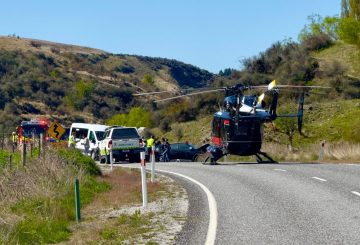사우스 타라나키의 현지 부족 (iwi) 과 의회가 새로운 파트너십 협약을 체결했습니다.헤 포우 티캉가 파트너십 전략은 남부 타라나키 지역 의회가 이 지역의 4개 지역과의 협력을 어떻게 개선할 계획인지를 설명합니다.이 협약은 시의회와 iwi의 거버넌스 그룹에 의해 이루어졌습니다.협약에는 양측 직원들이 함께 일하고 협의회가 파트너십에 자금을 지원하는 것도 포함됩니다.
협정에는 Iwi가 위원회 정책 개발, 서비스 제공, 특별 프로젝트 및 의사 결정에 참여해야 한다고 명시되어 있습니다.Iwi가 참여하려면 위원회 및 기타 출처의 추가 자원이 필요합니다.필 닉슨 시장은 양측 직원들이 협력하는 것이 필수적이라고 말했습니다.
시의회의 iwi 위원회는 파트너십을 2024-34년 장기 계획에 포함시키는 것을 승인했습니다.그러나 새 정부는 지방 정부 규정을 포함하여 마오리족과의 공동 거버넌스를 축소할 계획입니다.데이비드 시모어 (David Seymour) 신임 규제부 장관은 대체 규정이 재산권에 초점을 맞출 것이라고 말했다.
닉슨 시장은 정부가 지역주의를 계속 지지하기를 희망합니다.그는 시의회가 iwi와 좋은 관계를 맺고 있으며, 이를 기반으로 계속 발전해 나가길 원한다고 말했습니다.이 협정은 또한 사우스 타라나키에 있는 두 곳을 포함하여 주민투표 없이 설립된 모든 마오리 의회 와드는 차기 지방 기관 선거에서 주민투표를 실시하도록 규정하고 있다.닉슨은 지역 사회가 와드와 새로운 파트너십 협정을 지지해주기를 희망한다.
파트너십을 협상하는 데 3년 이상이 걸렸습니다.Iwi의 대표자들은 그 잠재력에 대해 흥분하고 있습니다.그들은 이를 통해 이위와 시의회 간의 협력과 신뢰가 강화되어 지구에 도움이 될 것이라고 믿습니다.이 협정에는 지역 민주주의를 위한 추가 계획도 명시되어 있습니다.




























































